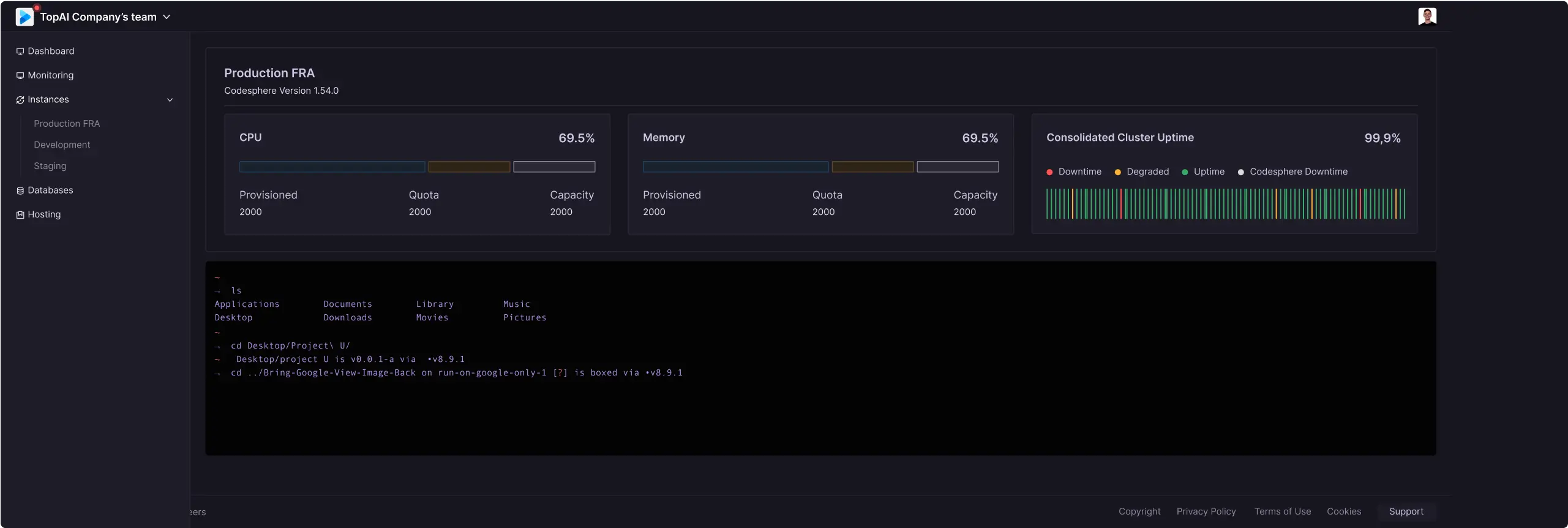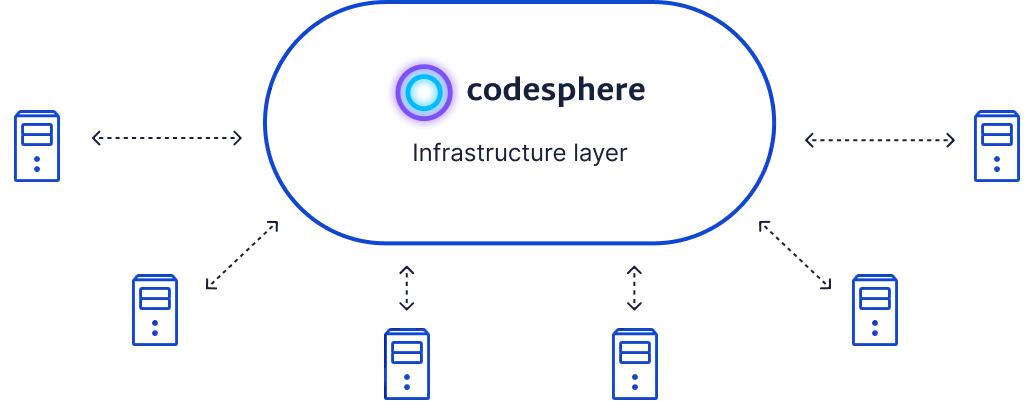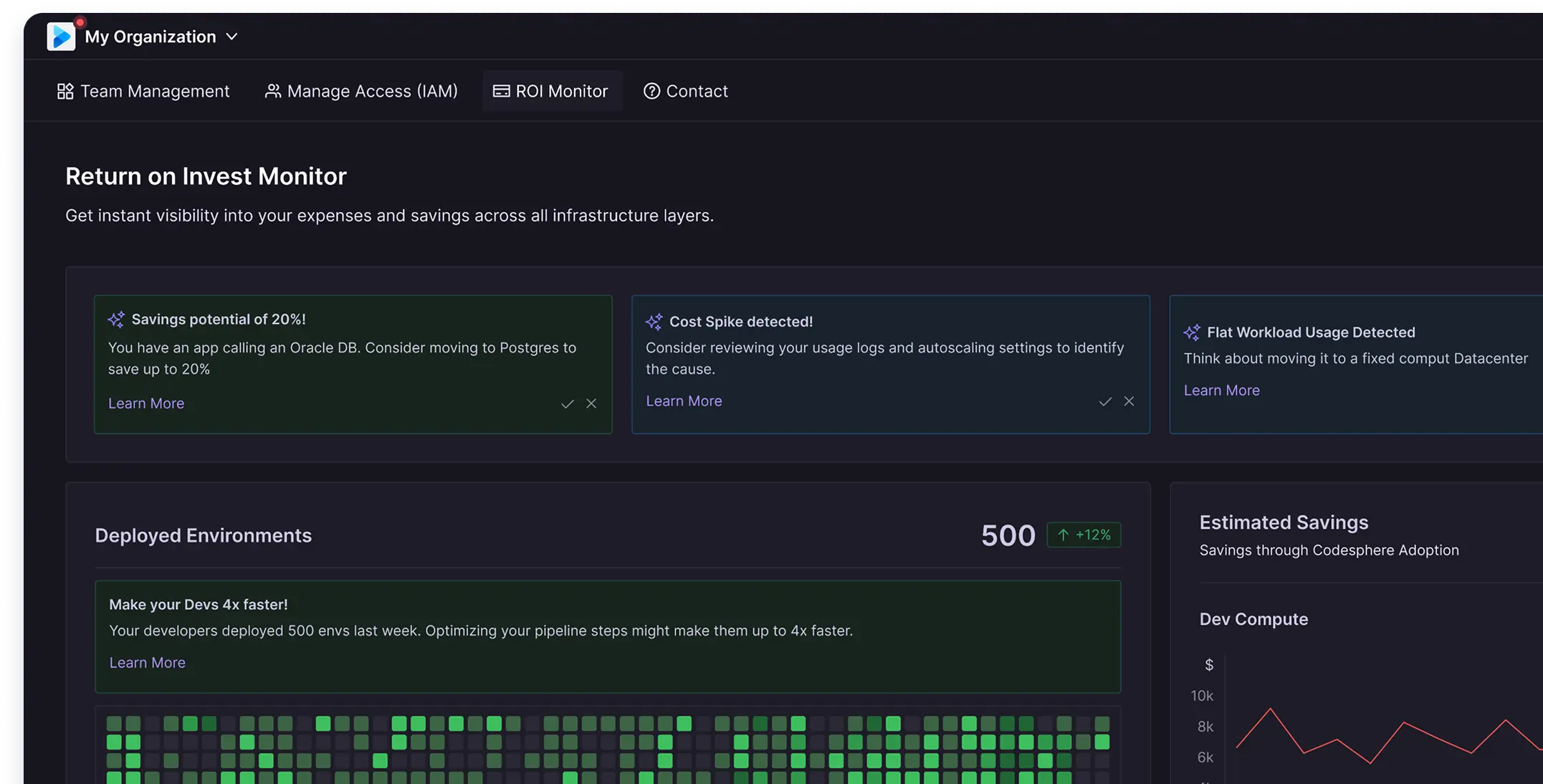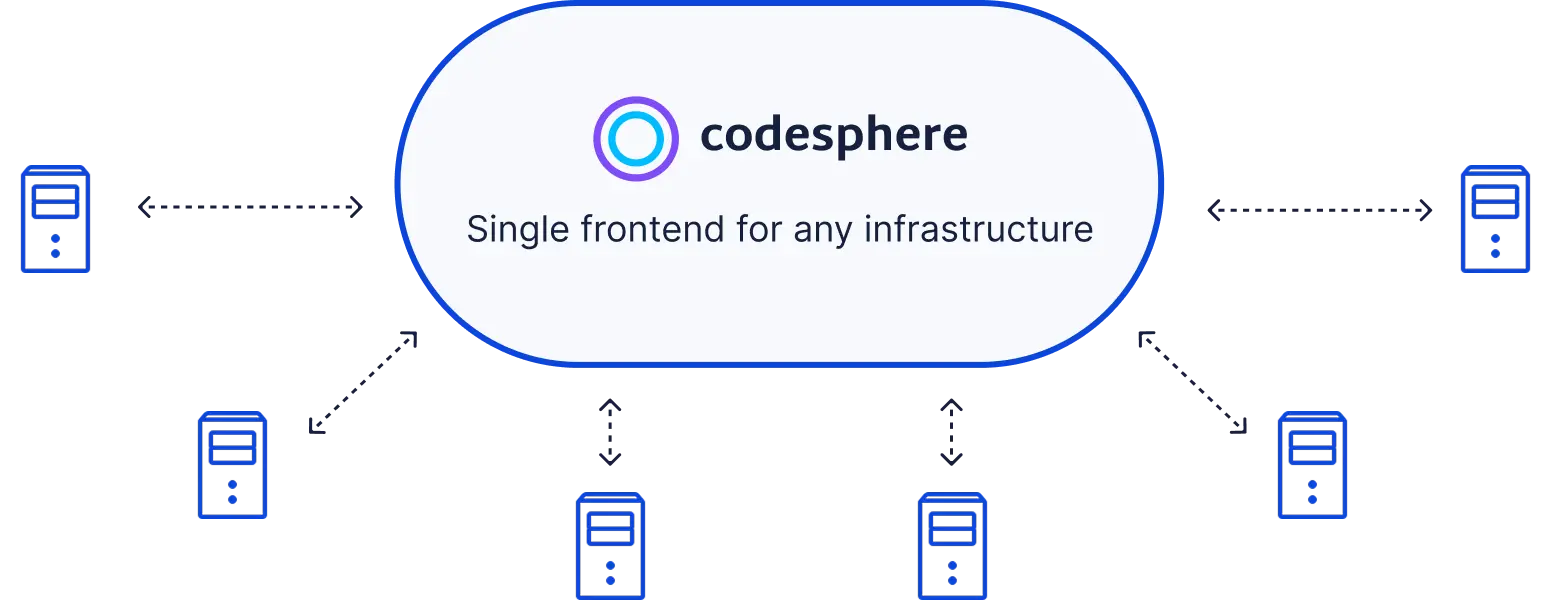Challenging big techs monopoly
Companies have long realized that sovereignty requires a multi-cloud strategy, the lock-in can be expensive.
Challenges with multi cloud
Tooling for separate universes
All large cloud providers build their tooling and managed services tailored to their infrastructure and have no interest in making any of it compatible across vendors.
Managed services vs. portability
Major hyperscalers share only a bare minimum: VMs and basic Kubernetes clusters. Relying on these alone creates significant operational overhead, while using their more convenient managed services eliminates any portability leaving companies locked in.
Conflict of interest
This limitation is intentional: AWS, GCP, and Azure all restrict cross-compatibility to maintain monopoly pricing. Companies that want to avoid lock-in must engineer their own platforms on top of basic services—an expensive and painful process.

There is another way
A single unified frontend for all infrastructures
Unlike the large hyperscalers, Codesphere is built to run infrastructure agnostic. The major advantage over others is the possibility to install CS on the basic services of any cloud provider or on-premise datacenters.
Standardization
For developers and ops experts, their environment, the available services and workflows always look the same - regardless which infrastructure lies underneath. This allows harmonizing and speeding up your software delivery.
Portability
Since Codesphere relies only on base components available in all major cloud environments and can even be installed on bare metal DCs, it is easy to pack up in one place and move to another infrastructure provider. This abstraction makes multi-cloud strategy a no brainer.
Connect multiple datacenters
You can also use Codesphere to connect multiple datacenter on different clouds & infrastructure to a unified frontend. This is great for companies that run in scenarios where multiple locations need to be serviced by centralized development teams.
Technological sovereignty
Recent years have shown how important it is to maintain independence from single sources of failure. Opting for an infrastructure agnostic abstraction layer is the best way to avoid that. Building this yourself comes with major technological challenges that are often underestimated.

End game infrastructure layer
We want to build the last infrastructure layer companies will ever need. We are committed to challenging the problems with current paradigms so that you don't have to.
All of this so that you and your teams can focus on what is really important - shipping business value creating software.


